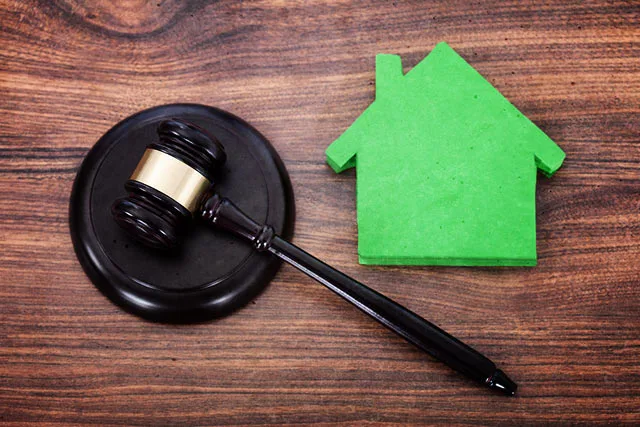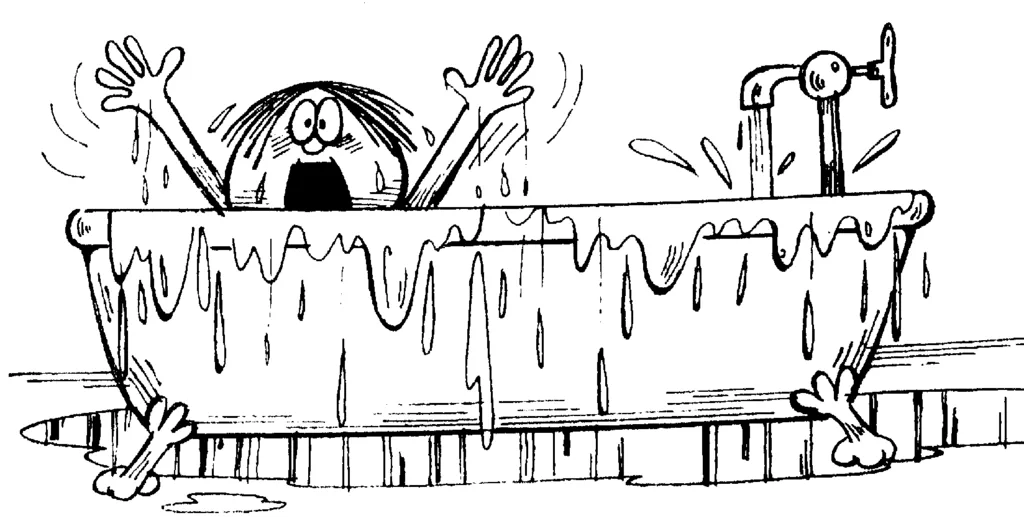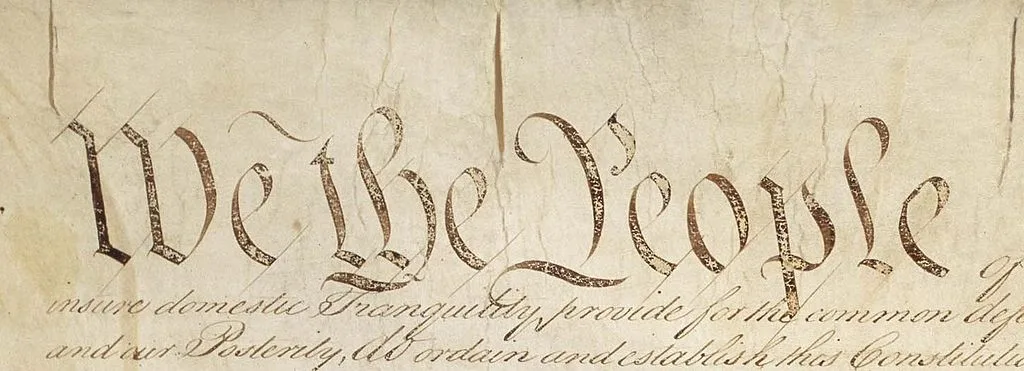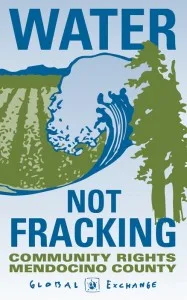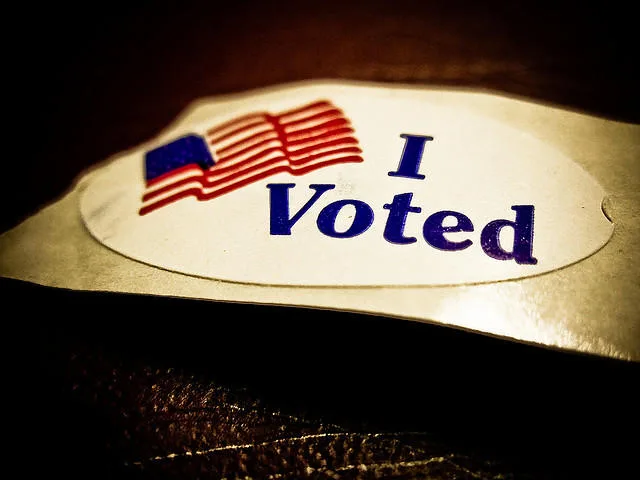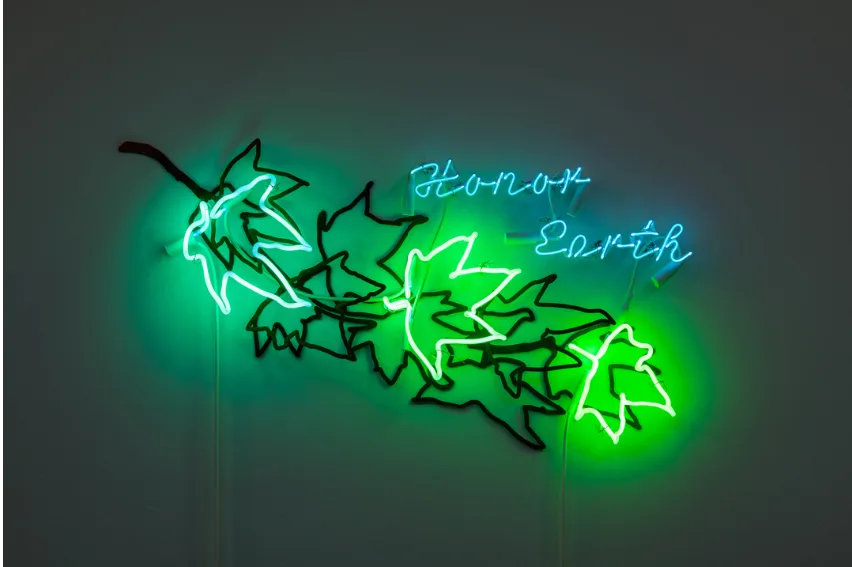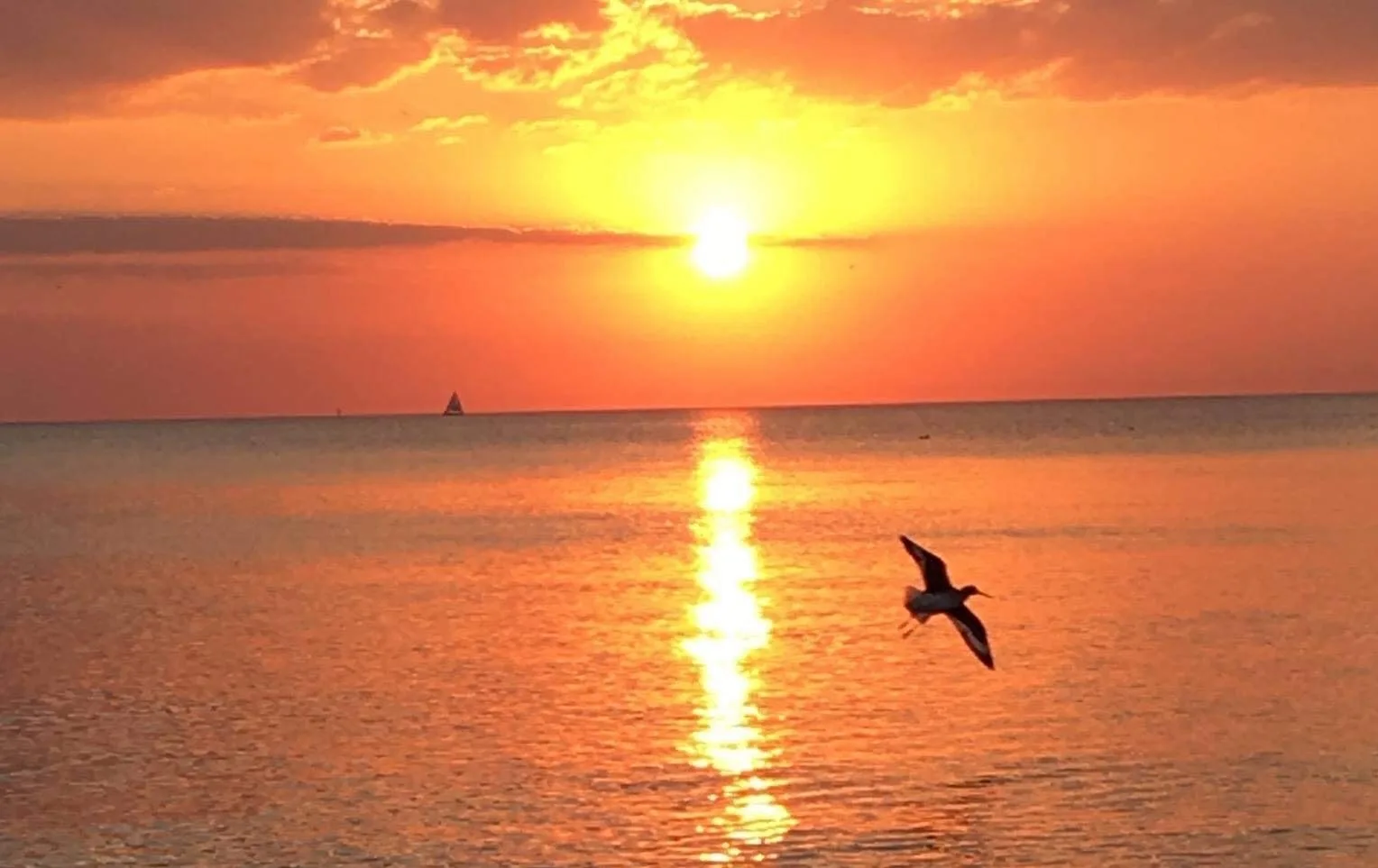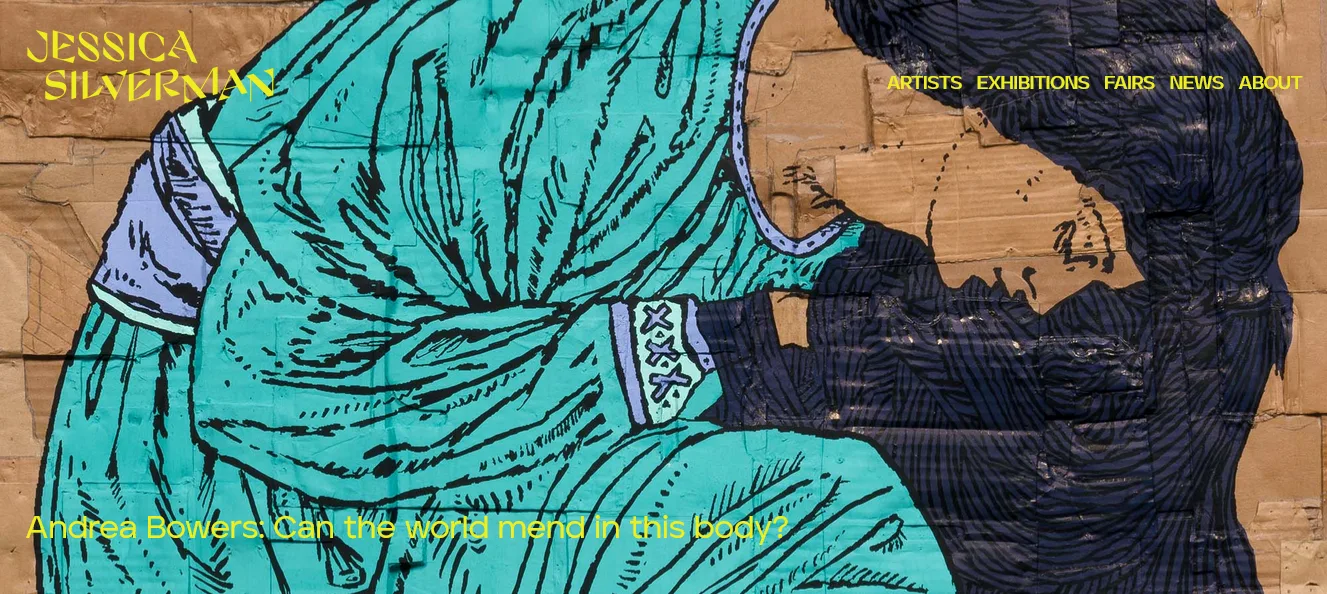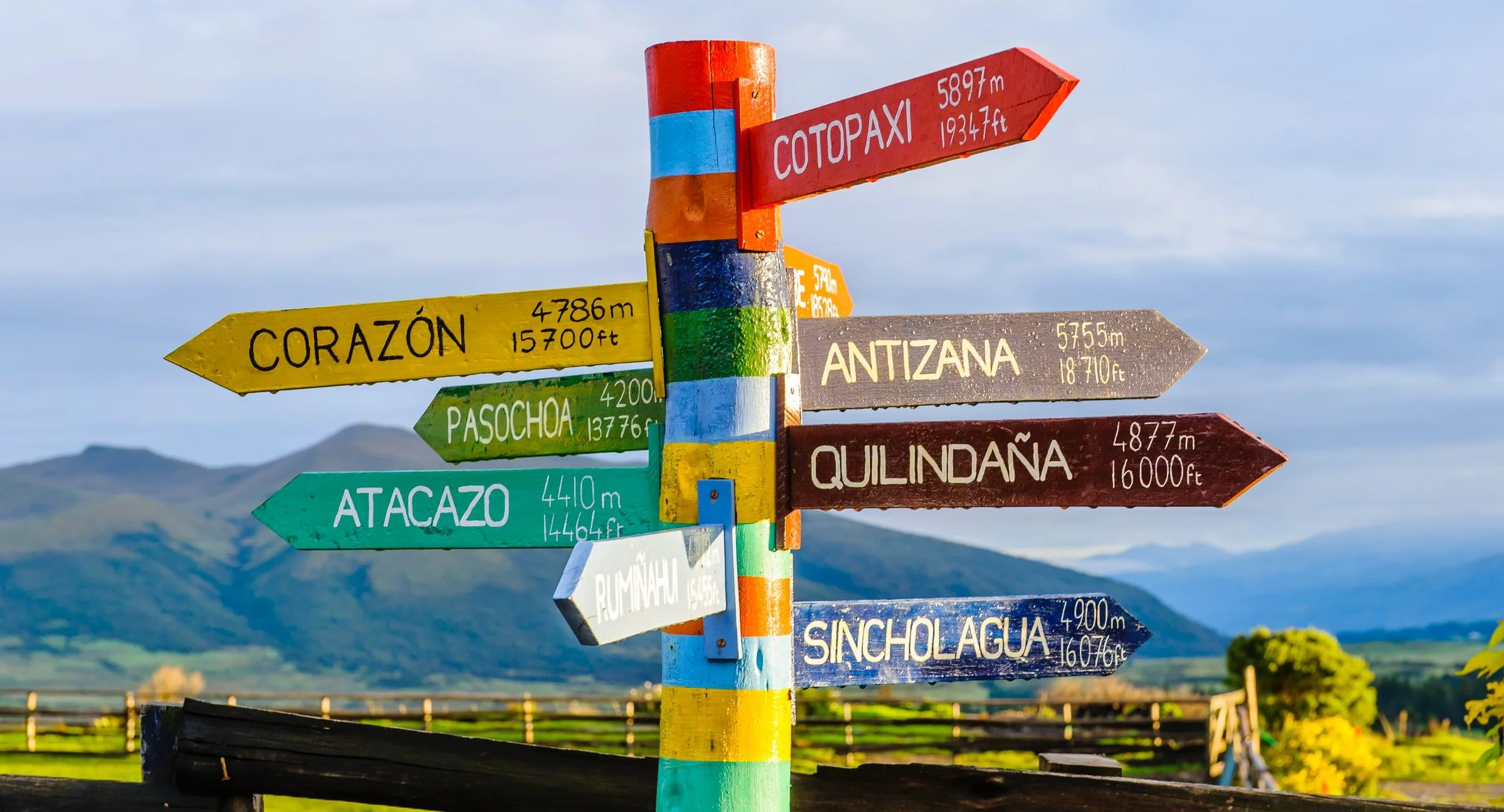Search Results for: rights of nature
In August 2015, thirteen states sued the U.S. Environmental Protection Agency (EPA) for violating the federal Clean Water Act. Rather than claiming that the EPA wasn’t doing enough to protect the nation’s waterways, the states were instead arguing that the agency was trying to do too much by seeking to protect more of the nation’s rivers and streams.
The Attorneys General for the states argued that the U.S. Constitution gives limited authority to the federal government to protect the nation’s waterways, and that the EPA’s actions – in seeking to bring more rivers and streams under the protection of the Act – overstepped that federal authority.
Doesn’t the federal government have the authority to protect all of the country’s natural environment, including all rivers and streams?
Which raises the obvious question – doesn’t the federal government have the authority to protect all of the country’s natural environment, including all rivers and streams? The Attorneys General who filed suit – driven by corporations who want to pollute waterways without federal interference – are arguing that it doesn’t, and that the Constitution itself limits the reach of the Clean Water Act and other environmental laws.
Unfortunately, they might be correct. At least one court has already agreed with them; and if the lawsuit ultimately succeeds, then the EPA’s latest attempt to protect the health of the nation’s waterways would be ruled to be unconstitutional.
Why the Constitution Isn’t What We Think it Is, & How the Environment and Civil Rights Were Left Out in the Cold
To understand how it might be unconstitutional to provide for the cleanup of rivers and streams, we must consider the background of the Clean Water Act itself.

In 1972, Congress adopted the Act, setting certain standards for water quality in the U.S. During the drafting of the law, congressional sponsors ran up against a problem they’ve encountered many times before – that while the U.S. Constitution provides specific congressional lawmaking authority in certain areas (such as taxes and national defense), it doesn’t recognize the authority of Congress to protect the environment.
This is because when the Constitution was drafted in the late 1700s, protecting the natural environment (as opposed to finding multiple ways to exploit it), wasn’t on the minds of the founding fathers – or almost anyone else for that matter.
Not only does the Constitution fail to provide for congressional authority in the area of environmental protection, it similarly fails to recognize congressional authority to legislate in the areas of civil rights, violence against women, or voting and worker rights.
While the founders were heavy on federal taxing and spending powers, armies and navies, and relations with other countries, Congress – as a guarantor of people’s rights – was an idea whose time had not yet come.
Of course, Congress has adopted civil rights, labor, and other rights-based laws. But in order to do so, it has engaged in a sort of legal flim-flam – by adopting those laws under a power the Constitution does provide Congress – the power to regulate interstate commerce.
Thus, to support its passage of the Clean Water Act (and other environmental laws), Congress was forced to use authority granted to it by the Interstate Commerce Clause, found in Article I of the Constitution.
Under the Interstate Commerce Clause, Congress has the authority to regulate commerce that occurs between the states. This means that Congress’s authority to pass the Clean Water Act – and other environmental laws – necessarily required treating the natural environment as commerce under the law. Otherwise, Congress was left without a platform to adopt and enforce laws to protect nature.
With the Clean Water Act, therefore, we find that it only applies to protect what are known as “navigable waters” – a phrase referring to waterways that are used for shipping and commerce which flow between states.
If it isn’t navigable, it ain’t commerce; and if it ain’t commerce, the federal government lacks the authority to regulate it.
Reasonable Birds
Congress has been forced to legislatively contort itself to fit under the Constitution’s commerce authority to protect the natural environment. Yet, its actions are nothing compared to the gyrations of the federal courts when asked to apply the limitations of interstate commerce to the nation’s environmental laws.
For example, the U.S. Supreme Court concocted a “reasonable bird” test for evaluating whether a waterway is “navigable” and therefore falls under the Clean Water Act’s protections. The Court has declared that if a “reasonable” bird flying between states would land on a waterway, then the waterway could be considered to fall under Congress’s interstate commerce authority, and therefore, could be regulated under the Clean Water Act.

If that all sounds farfetched, consider that Congress has been engaged in these legal games for over a century.
Civil rights and desegregation laws have been defended on the basis that they are an assertion of Congress’s authority to protect African-Americans as travelers in interstate commerce. One particularly distasteful (but clarifying) moment occurred during a 1960s oral argument in a U.S. Supreme Court civil rights case – African-Americans were discussed as “articles” of interstate commerce, thus falling under Congress’s authority to desegregate interstate travel corridors.
Fitting a round peg into a square hole has meant that civil rights, labor, and environmental laws all must explain, usually in the “authority” section of each law, how those laws are necessary to protect interstate commerce.
The National Labor Relations Act, for example, begins by declaring that the intent of the law is to eliminate “strikes and other forms of industrial strife or unrest which have the intent or the necessary effect of burdening or obstructing commerce.” The law then goes on to explain that the purpose of the law is not primarily to protect the rights of workers, but to prevent the “disruption of the market for goods flowing from or into the channels of commerce.”
The Affordable Care Act & the Commerce Clause
When courts interpret the reach of environmental, labor, civil rights, and other laws, they routinely examine the scope of congressional authority under the Commerce Clause that allows Congress to adopt them in the first place.
That’s exactly what happened in the main challenge to the Affordable Care Act. Lawsuits challenging the constitutionality of the Act focused on whether Congress had the authority under the Commerce Clause to require people to buy health insurance, as required by the Act. The Obama Administration’s defense of the law consisted of arguing that unhealthy people would create a burden to interstate commerce due to their inability to participate in economic activity. Thus, the Administration argued, Congress acted within its constitutional authority in adopting the law.

In hearing the case, the Supreme Court rejected that argument, declaring that Congress lacked authority under the Commerce Clause to adopt the Affordable Care Act. However, the Court saved the legislation by finding that Congress had acted within its lawful taxing authority, and thus, that the Act’s requirement to purchase health insurance was constitutional.
While the decision was held out to be a great win for the healthcare law – which it was – the Court’s ruling sent a signal of more ominous developments. That is, if the Court intended to restrict the reach of Congress under the Commerce Clause with regard to healthcare, that would, in turn, pull the rug out from under those civil rights, environmental, and labor laws that have been historically pinned to it. Thus, the Court’s decision on the Affordable Care Act could be considered one step forward, but two steps back – a doorway to a new jurisprudence that severely limits congressional power to adopt rights-protecting laws.
Transforming Nature from “Commerce” to “Rights-Bearing”
While most liberals are glued to the up or down nature of opinions from the courts, they don’t much care how judges arrive at them. That is, until the long-term erosion of gains makes it too late to understand how the ground has permanently shifted beneath them.
It’s time to come to grips with what the Constitution is, and more importantly, what it isn’t.
The critical question is whether we can protect the environment under a constitutional framework that requires Congress to treat nature as interstate commerce. If we cannot, then we need to change the Constitution that we have.
On the environmental front, that means a Constitution that finally recognizes ecosystems and natural communities as worthy of protection on their own, without screening them for their value to commerce and the economy.
Without waiting for others to arrive at that conclusion, a national movement is now bubbling up on its own. More than three dozen towns, villages, cities, and counties across the country have now adopted local laws which recognize that true environmental protection is only possible if nature possesses enforceable rights of its own to exist and flourish.
What began as a grassroots movement is now beginning to drive upward, with proposed state constitutional amendments, and a federal constitutional amendment, which would guarantee a constitutional right for communities to protect the rights of nature.
At one time in this country, of course, slaves were in the same position – considered “right-less” under the law. It took the Abolitionist Movement and the Civil War to amend the Constitution to transform slaves from being recognized as property under the law to being rights-bearing people.
Until we recognize the rights of nature in our federal and state constitutions, we will forever be dependent on the growth of commerce as an excuse to protect our natural environment.
Until we recognize the rights of nature in our federal and state constitutions, we will forever be dependent on the growth of commerce as an excuse to protect our natural environment. It’s time to sever that link and unplug the natural environment from the wheel of the commercial economy.
If we don’t, we will forever be constrained by a 1780s system of law that didn’t recognize the natural environment as being worthy of any protection at all.
Community Rights Paper #9: Drowning the Clean Water Act in the Constitution’s Bathtub
Visit here for more Community Rights Papers!
Sunday, May 19, 2013 nearly thirty residents from communities all around the state met to sign the Barnstead Declaration and to initiate a statewide call for legislative and constitutional changes that recognize the right to local self-government and the Rights of Nature.
The filing of incorporation papers with the state of New Hampshire and the seating of the New Hampshire Community Rights Network (NHCRN) Board of Directors marked the official beginning of an educational effort to drive changes to law that reflect guaranteed protections for the right to local self-government and the rights of nature. There are currently seven municipalities in New Hampshire with community rights-based laws on the books, all of which were petitioned to annual town meetings and acted on by residents concerned about projects they saw as threatening to the health, safety and wellbeing of their neighborhoods. These local laws elevate the rights of people and nature above the claimed rights of corporations.
The May 19th meeting reflected on the historic work done by Barnstead residents in 2006, when they voted to ban corporate water extraction within the Town by enacting the Barnstead Water Rights and Local Self-Government Ordinance.
NHCRN members who gathered at the Barnstead Town Hall voiced concerns about the lack of local control over diverse issues such as energy – large scale hydroelectric project the Northern Pass, industrial wind, and smart meters; corporate water extraction; clean elections; unsustainable development; the patenting of life forms by corporations through GMO engineering; and other state-permitted projects. Each community will be represented on the NHCRN Board by a democratically – elected member, who will participate directly with other board members and volunteers to further educate New Hampshire people on the right to local self-government.
Washington Community Rights Network
A special project of the Community Environmental Legal Defense Fund
Washington Communities Launch Statewide Network
To Advocate for Community Rights
“The corporate state is not science fiction. It’s barreling through my community in the form of coal trains. Government isn’t going to stop this kind of destructive behavior. It’s going to take people, in the places where we live, to break the chokehold of law favoring corporate rule to one of community rights.” – Rick Dubrow of Bellingham, Washington.
MEDIA RELEASE
August 7, 2012
CONTACT: Kai Huschke
509.607.5034
info@celdf.org
SPOKANE: In late July, citizens from Washington communities gathered in Spokane to launch the Washington Community Rights Network (WCRN).
Network members released The Spokane Declaration, calling upon communities across the state to join together in a movement to elevate the rights of people, their communities, and nature above the claimed rights of corporations. This comes with an understanding, as stated in the Declaration, that:
(O)ur communities are under siege from corporations exploiting our communities for resource extraction and a variety of other uses harmful to us and the natural environment…from a structure of law that has bestowed greater rights on those corporations than the communities in which they operate…
The creation of the Washington Community Rights Network comes out of active community campaigns on both sides of the Cascades. Bellingham has qualified a Community Bill of Rights initiative for the November 2012 ballot. The measure would secure residents rights to clean air and water, along with prohibiting coal trains from passing through Bellingham.
In Spokane, an effort is underway to qualify a third Community Bill of Rights for the November 2013 ballot. In 2011 voters nearly passed a similar measure that would’ve given neighborhood residents decision-making power over major development, greater protections for the river and aquifer, and worker rights over that of corporate rights. Seattle, Vancouver, Skagit County, Whatcom County, and other Washington communities are at various stages of community rights efforts.
The Network will expand its grassroots organizing to communities across Washington. Kai Huschke, Legal Defense Fund Organizer and WCRN Coordinator, explained, “As a growing number of communities face threats including massive coal shipments, they are reaching the shared conclusion that corporations, along with our state and federal government, have more power to decide what happens in our communities than the people who live there. They are now coming together through the Washington Community Rights Network to organize for local self-governance to elevate community rights over corporate rights.”
The Washington Community Rights Network is a special project of the Community Environmental Legal Defense Fund. The Legal Defense Fund, headquartered in Mercersburg, PA, with offices in Spokane, has been working with people and communities in Pennsylvania, across the United States, and internationally since 1995 to assert fundamental rights to democratic local self-governance, recognize nature’s rights, and end destructive corporate actions aided and abetted by state and federal governments.
###
Feature image by Andrea Bowers – “Honor Earth”
Feb 2-May 26, 2024 in Cleveland, Ohio.
The “Exist, Flourish, Evolve” art show will be held at The Cleveland Museum of Contemporary Art and will focus on Rights of Nature and the Great Lakes in particular.



Andrea Bowers, Los Angeles based activist artist, learned of CELDF when she heard about the Lake Erie Bill of Rights (LEBOR). She grew up in Ohio just a few steps from Lake Erie. After hearing about LEBOR Andrea reached out to CELDF to learn more about our work with Rights of Nature and asked how she could help the movement. Art has always been a way to inspire people’s thinking and challenge their beliefs, along with activism. We are thrilled with the collaboration between Andrea and CELDF and we can’t wait for the show to open!
As Chilean voters are poised to go to the polls this coming Sunday, September 4, to hopefully become the second country in the world to include recognition of the Rights of Nature (RON) in their national constitution, it is obvious just by reading a few headlines in any given week that more countries need to embrace and follow Chile’s lead. “Forever Chemicals Increase Risk of Liver Cancer”, “Violent storms kill three across Midwest and southern US and leave thousands without water”, “Pakistan floods: One third of country is under water”, and these are just a few.
Make no mistake; this new, very rights expansive constitution is not on the ballot because some politicians had a vision while they slept of making a paradigm shift to protect nature and give the people more of a say in local decision making. NO. Rather, the people of Chile pushed for this plebiscite.
For a very simplified history lesson, on September 11, 1973, with the backing of the U.S., Augusto Pinochet seized power of Chile in a coup d’état. Pinochet persecuted political critics, banned labor unions and privatized social security and other state enterprises, setting off decades of oppression of the people of Chile and ever-growing wealth disparity between the rich and the rest of the population along with devastating environmental effects from massive mining and mineral extraction by global corporate interests. Henry Kissinger introduced national elites to the market-based model for controlling government and instituting laws and policies that benefited capitalist investors at the expense of the nation and its ecology.
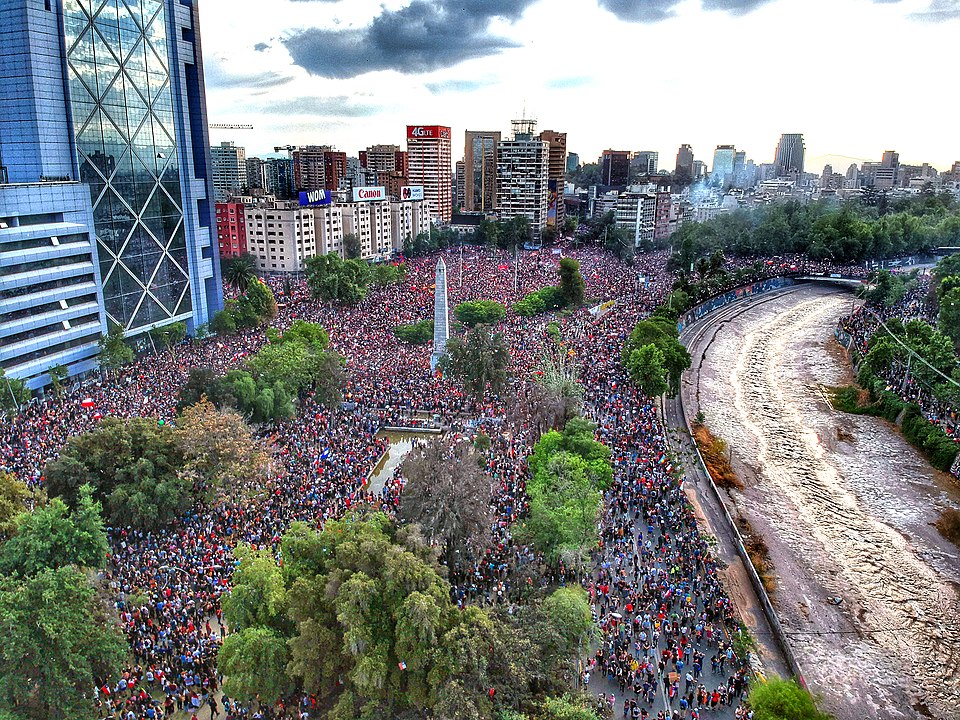
The people had enough of the neoliberal oppression and the straw that broke the camel’s back, as they say, was an official increase in the cost of using public transportation in 2019, when the people said “enough” and took to the streets en masse. Nearly 2 million people gathered on the streets of Santiago on October 25, 2019 (the equivalent of 36 million Americans taking to the streets) to protest the system of elite rule at the expense of everybody else.
It is appropriate that this vote takes place in September. It is the month in which the very first Western law recognizing legal rights for ecosystems was enacted on September 19, 2006, in the small town of Tamaqua Borough, Pennsylvania, a conservative community located in the east-central part of the state. As poisonous waste was about to be trucked in from New Jersey to be dumped into open pit mines in Tamaqua – remnants of prior environmental devastation – and as more people were diagnosed with rare cancers and other debilitating diseases—they said ENOUGH. Just like the people of Chile, they reached a limit.
Tamaqua’s people persuaded a majority of their elected local officials to take seriously the connections between what was happening to their environment and water, and what was happening to their own bodies. Some residents reached out to the Community Environmental Legal Defense Fund (CELDF) and asked for help. With CELDF’s assistance, an ordinance was drafted, they organized educational community meetings and mounted protests against the state environmental protection agency whose issuance of permits to the Lehigh Coal and Navigation Company made it complicit in poisoning the community. It wasn’t easy and the vote of the Borough Council was close, but the local government officials passed the ordinance that turned local ecosystems into rights-bearing entities.
There were no big media headlines back in 2006 and the law went unnoticed by most, including environmental activists and organizations. But, two years later, it caught the attention of some people in the country of Ecuador. The Pachamama Alliance, an NGO rooted in Amazonia, facilitated the connection between CELDF and the Constitutional Assembly to develop legal language recognizing the Rights of Nature. On September 28, 2008 (September again, hopefully, a good omen for Chile), the people voted overwhelmingly to accept the new constitution. With that vote, Ecuador became the first country in the world to constitutionally recognize legal rights for Mother Earth, while also giving the people legal standing to act on behalf of Nature in legal proceedings.
Fast forward to November, 2021, the Constitutional Court of Ecuador upheld the rights of the Los Cedros Cloud Forest and stopped a mining project. This was a historic decision that is an inspirational read. The court’s ruling clarifies what it looks like when Rights of Nature are enforced.

Since 2006, CELDF has continued to be an active and long-term contributor to the community rights and Rights of Nature Movement. We have battled side-by-side with people in Oregon to protect nature from toxic pesticide spraying of forests; in Washington to secure worker rights and people power in opposition to rampant development; in Ohio, we helped organize a successful campaign to enact the Lake Erie Bill of Rights; in Pennsylvania, we’ve been involved in protracted struggles to protect nature from fracking; in New Hampshire, we’ve partnered with communities to protect their individual rights to religious freedom and water from privatization. As more communities have stood up for the Rights of Nature, the opposition has become more fierce and attempts to shut down and co-opt the movement ever more slick and deceptive. With these competing agendas converging upon the community rights and Rights of Nature community, both here in the US and around the world, it has become clear that the time is right to reflect on where the movement has been, where it is now and where it could go in the future.
As we witness more and more the violent effects of extraction, consumption and destruction of Nature and the permanent effects that pathological materialism has on all life, not just humans, we must listen more closely to, and learn from, traditional Indigenous people around the world. They have lived in harmony with nature, demonstrating what true sustainability looks like, since time immemorial.
We must come to understand that changing laws is not enough. We must change our thinking and our relationship to the natural world. What’s required is a cultural shift as well as a legal shift that spawns alternative ways of living and governance. CELDF has partnered with communities for over two decades to blueprint a better existence. Chile is looking to move in that same direction with their proposed constitution.
Because both the legal and cultural shifts have to happen simultaneously, CELDF will be introducing our Nature Leads Series – model law templates, principles, articles and conversations to keep the Rights of Nature Movement moving forward. We wish the people and the ecosystems of Chile good luck on Sunday. The “final score” affects us all!
This year’s Peatfest is focusing on the rights of peatlands. Inspired by the overall rights of nature movement and the CELDF assisted Declaration of Rights of Wetlands the youth-led Re-Peat organization says this about what they are looking to gain from the 4-day festival, “we see a huge amount of value in connecting the Rights of Nature movement to peatlands, and want to collaboratively kickstart the process of acknowledging these rights. As a powerful tool, Rights of Nature has the potential to transform our relationship with the natural world when done in collaboration with other vital decolonial work.”
CELDF will be leading a workshop on dismantling corporate privilege and elevating local-self determination in the context of evolving legal rights of nature. CELDF will also be part of a panel titled “Universal Declaration of the Rights of Wetlands: How Do We Operationalize These Rights?” with international colleagues from the Rights of Wetlands working group. The Rights of Wetlands working group, of which CELDF is a part, will be presenting a draft on the intrinsic rights of wetlands at the Ramsar COP14 to be held in Switzerland this November.
We at CELDF are privileged to build relationships with so many people across the country working on Community Rights and Rights of Nature in their communities and we hear so many stories. This guest blog by Sherry Straub is a way for us to share one of these stories with you.
From one community protest to another over the past twelve years, I have heard the chant “What do we want? Clean water! When do we want it? Now!” Well, “now” has come and gone, and we still don’t have clean water.
Reflecting back on the environmental disaster of the Deepwater Horizon oil spill in the Gulf of Mexico, and in conversations with people about it, I realized two things:
1. People didn’t understand our ecosystem was in big trouble.
2. There were plenty of passionate people who wanted to create awareness by educating those who didn’t understand.
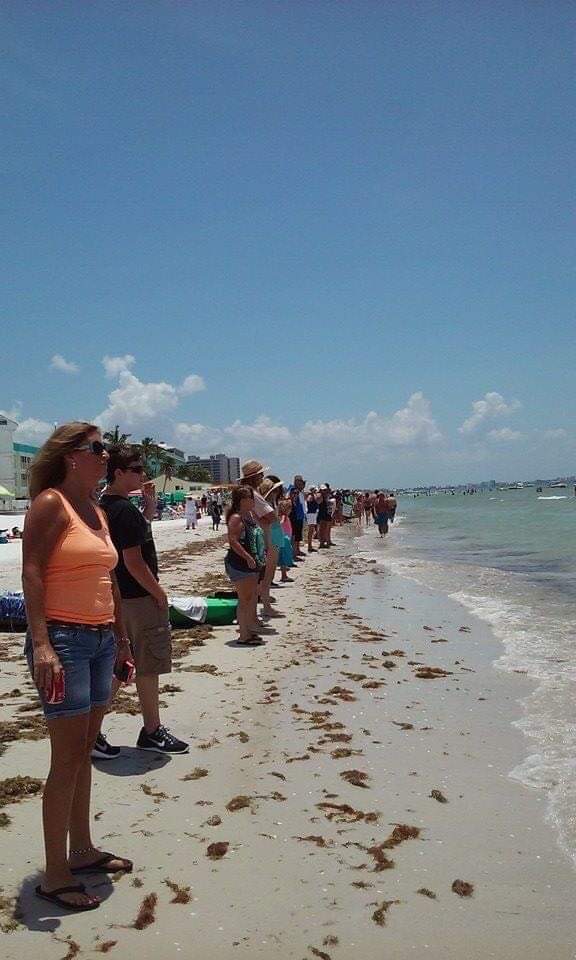
This is about the same time I attended and participated in the first Fort Myers beach protest, Hands Along the Water. It was organized by one of our beach locals and honored nature advocate, Jo Ann Finney. Looking back this was actually the start of the South Florida Clean Water movement. I remember this day like it was yesterday.
All of the people lined up on Fort Myers Beach and held hands as we stretched across the sand for miles on our little seven-mile island. We stood united for the Gulf of Mexico.
The loudmouth on the megaphone, John Heim, another nature advocate, was just what this crowd needed to get them pumped up and pissed off. As he shouted, “what do we want?” The crowd shouted back “Clean Water”. Then he got louder and shouted “when do we want it?” It was in Chorus as the crowd shouted back “NOW”. At that moment I knew even though it seemed so simple that was what we wanted, Clean Water Now. This is when I created the Facebook page and public group named the same, Clean Water Now.
So how did I get to where I am now from there?
It’s been a long journey and along the way, I realized that it didn’t really start on Fort Myers beach. I am from Toledo, Ohio, and have spent most of my life living there or in Florida. But, I think that’s where the realization started and I found some of the pieces to the big puzzle I have been trying to put together for years.

You see, some days the effects of my exposure to environmental toxins make it difficult for me to simply do simple life tasks because of my health. When I say this, I also mean my mental health, as that is part of my physical well-being. I know a lot of people don’t want to talk about it, but we have to. The mental effects of industrial toxins introduced into the environment are impacting so many of us. It should not be taboo. Neurological disorders caused by exposure to toxins cause mental health problems. It’s not a fluke of nature, and someone is responsible. Sadly, mental disorders are too frequently treated as personal failings, or at best as unfortunate naturally occurring chemical imbalance, but never as a pathology with a man-made cause. I’ve been haunted by trying to answer the question: why the denial?

I am not a doctor and I do not give medical advice. But, during my medical journey, which follows my environmental activist journey, I have learned a lot and I willingly share what I’ve learned. Whether you listen or not, that’s up to you.
When I first got sick nobody was talking much about the autoimmune system. Doctors finally determined mine was out of whack.
After many tests and doctor visits, I found out I had an autoimmune disorder called Hashimoto’s disease. This was in 2015, after the cyanobacteria water crisis in Toledo Ohio, which happened in 2014. A huge algae bloom, fed by industrial agricultural runoff into Lake Erie, made the tap water in Toledo toxic to consume and even poisonous to bathe in or touch.
Today I’m not allowed to relay this story around my closest friends, as they have heard about it so many times. They can’t take it anymore. I get it…I understand. Some days I’m tired of saying it. Some days I’m tired of trying to put all of these puzzle pieces together. I’m sick, but luckily not dead yet! So, I can’t stop telling my story. I won’t… I refuse to give up!
I can’t help but wonder how many other people in Toledo, in Florida and all the other places experiencing severe algae blooms are suffering the same as I am? I do know there is research being done (simply google cyanobacteria and health effects) and also a documentary that came out in 2017, Toxic Puzzle, covering the issue.
Many tell me to leave it to the professionals as if I’m not an expert on what it’s like to be on the receiving end of a public poisoning that is making a profit for some. Anyway, I’ve talked to the professionals til I’m blue in the face. What happens when they don’t have any answers?
Of course, I seek advice from my doctor often. I have gone for numerous tests, procedures, and have even had surgery to remove my enlarged thyroid.
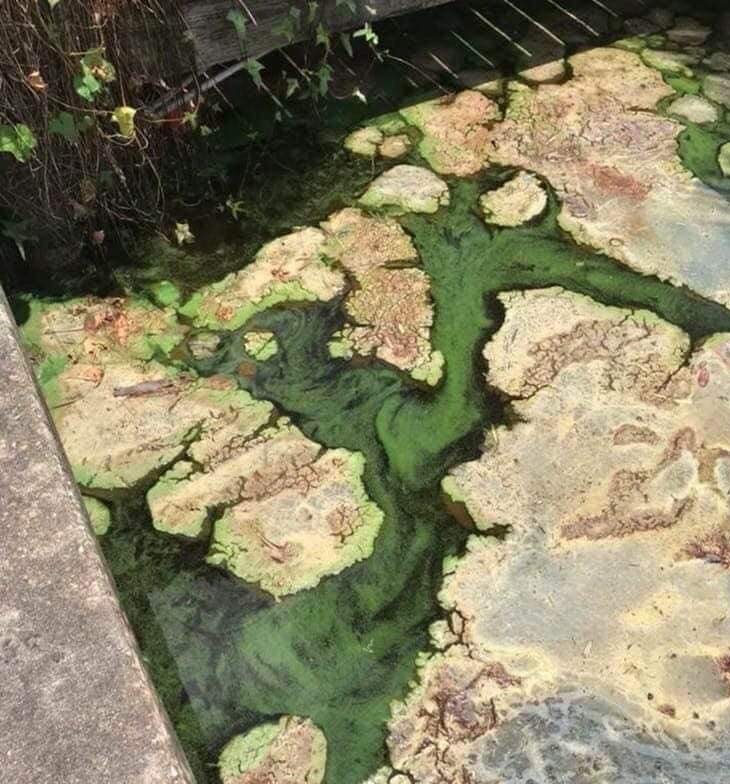
I value her opinion as a medical doctor, but what I don’t understand is how she can tell me, “there just isn’t enough information and data to make the connection between the toxins in the water and your issues. Our county health system is in a small town.“ Ft. Myers a small town? Seriously? If that’s the case, I feel sorry for the people that live in rural cities and towns.
And this is the real reason why I speak out. We are putting toxins not only into the rivers, lakes, and oceans but into our bodies and our children’s bodies through that water. And there are other toxins that we breathe into our lungs and others in the food we swallow. And, we aren’t the only ones. What about the fish, the turtles, the birds, the trees, and all the beautiful life that we share this Earth with? What are we doing?
We have to fight for the Rights of Nature like our lives depend on it, because they do. We are nature!
Our communities deserve more than just the right to Clean Water; our entire ecosystem, our Mother Earth depends on us to end the poisoning. It seems to me we need to recognize the Rights of Nature, and make it illegal to poison Earth and her inhabitants.

Join our community of friends giving a voice for our environment, at Florida Community Rights Facebook page. Our communities are uniting and becoming stronger. The power is in the people.
What do we want? Clean Water!!!
When do we want it? NOW!!!
The Lake Erie Bill of Rights and CELDF are influencing Bower’s work on Rights of Nature.
Jim Hightower mentions CELDF in his publication on the growing Rights of Nature movement and the importance of protecting the health and survivability of ecosystems worldwide.
Drawing on a provision in Ecuador’s popularly-adopted constitution of 2008, the nation’s Constitutional Court (Ecuador’s highest court) halted mining concessions and permits issued in the Los Cedros Protected Forest ecosystem. The mining would violate the Rights of Nature, the court ruled in the landmark decision.
In the United States, whether it be about oil/gas drilling, corporate agriculture or pesticides, people in the communities that face harms caused by these industries can rarely even get into court to make a case and present evidence, let alone ecosystems themselves. We live under a system that presumes environmental regulations actually protect the environment. The court in Ecuador actually overruled existing environmental regulatory law, which had permitted mining in Los Cedros.
What will it take to advance the Rights of Nature in the United States in such a way that similarly challenges the existing environmental regulation paradigm, which has thus far only regulated the rate of destruction?
Comparing the Los Cedros Forest to Ohio, USA
In 2012, my own community of Broadview Heights, Ohio passed a law after residents petitioned for a direct democracy initiative to prohibit any new oil/gas drilling in the municipality. The law they drafted and presented to voters included residents’ right to a healthy environment and Rights of Nature within the community. Voters passed the law by 67%, denying consent to any additional drilling. (Ninety wells had already been drilled in our 13-square-mile community).
Two drilling corporations that had obtained state permits to drill more oil/gas wells, using the process of “fracking,” then sued the municipality of Broadview Heights. The people and the environment could not even get into the courtroom as intervenors in the case and were forced to sit back and watch local elected officials and lawyers half-heartedly defend the law, a law which the officials themselves did not pass and never supported. Being a direct democracy initiative, it was voters who wrote and passed the law.
The drilling corporations argued their “rights” were being violated by the law and that the state had passed a law in 2004 preempting any local community from passing laws regarding the oil/gas industry. The judge agreed with them. The corporate “persons” had obtained all the necessary government permits and so their activities were legal in the eyes of the court—and there was nothing the community could do about it. No scientific studies on the harms of fracking and drilling in the community were ever considered or presented as evidence. All that mattered to the court was that the drilling companies’ actions were deemed legal by the state. The rights of the natural environment and the people were never considered, let alone defended, because they were “preempted” by state law.
This is why the recognition of the Rights of Nature in the Ecuadorian Constitution was so crucial in helping protect the people and forest of Los Cedros. The plaintiffs who brought the case to enforce the Rights of Nature were able to get into the courtroom and present evidence, something the people of Broadview Heights never got the chance to do.
What about Pennsylvania, USA?
When we compare what is happening in Grant Township, Pennsylvania to Broadview Heights, Ohio and Los Cedros, Ecuador, we can see how having the recognition language for the rights of a healthy environment in a state or federal constitution can help facilitate leveling the playing field at least a little bit.
Unlike in Broadview Heights, the Grant Township case is progressing to trial. This gives Grant Township the opportunity to collect information through the court “discovery” process and to depose witnesses. This is farther than Broadview Heights and Toledo, Ohio (Lake Erie Bill of Rights) and most other communities across the United States have gotten. Typically, the courts have looked for procedural ways to overturn Rights of Nature laws, or they take seriously corporate lawyers’ claims that Rights of Nature laws violate the civil rights of corporate “persons.”
Part of the reason the Grant Township case has progressed in the way it has is thanks to a 1971 “Environmental Rights” amendment to the Constitution of Pennsylvania that secures rights “to clean air, pure water, and to the preservation of the natural, scenic, historic and esthetic values of the environment. Pennsylvania’s public natural resources,” the amendment continues, “are the common property of all the people, including generations yet to come. As trustee of these resources, the Commonwealth shall conserve and maintain them for the benefit of all the people.”
Of course, this language did not stop fracking, corporate agriculture, industrial pollution and other harms from wreaking havoc in the state over the past 50 years.
But, it did help residents in Grant Township to get a foot in the door. The trial is scheduled for 2022. No one knows how the court will rule.
What do these cases mean for building a movement?
The case surrounding the Lake Erie Bill of Rights, in Toledo, Ohio, garnered the attention of people around the world. Even though a federal judge made the decision to overturn the law passed by the people recognizing Lake Erie’s right to exist, flourish and thrive, it did help expand peoples’ political imagination. Thousands, maybe even hundreds of thousands of people were exposed to a new way of thinking about nature and the relationship between people and a Great Lake. This new way of thinking about nature helps push a cultural shift.
Chicken or the egg?
So this brings me to the “which comes first?” question.
Does the law change first and shift the culture? Or does the cultural shift happen first and the law follows?
After a decade of doing this work as a Community Rights and Rights of Nature organizer, I would have to say that they happen together. Victories on both fronts are both important for the movement. If laws are supposed to reflect a society’s values and morals, that would suggest to me that the cultural shift will need to happen first. If we truly value clean air, water and a livable future for our species, our current laws and system do not reflect these values. However, if we value profits and power and define “progress” as creating more and more stuff while destroying more and more of the Earth, then our laws are reflecting those values.
So a movement for systemic change will require a cultural shift in the values of the society. And manifestations of cultural shift often happen at the local level first. That’s why we fight for local power.
In 2006, Tamaqua Borough, a small rural town in Southeastern Pennsylvania was the very first municipality to pass a law in the western, settler colonial legal structure recognizing Rights of Nature.
Following decades of Indigenous movement building and resistance in Ecuador, a newly empowered peoples constitutional assembly learned of Tamaqua as it was helping draft a constitution. This contributed to the Rights of Nature language that eventually made its way into the new constitution.
The movement then began to snowball. In New Zealand, Bolivia, Colombia, India and others. In Pittsburgh, Barnstead New Hampshire, Spokane Washington, Toledo Ohio, Lafayette Colorado, Mora County, New Mexico and more U.S. cities. Indigenious nations have also taken the lead on this front on the continent.
Are Rights of Nature the end goal?
We have to be realistic about what Rights of Nature as a legal construct can achieve. And in the larger movement context, we have to be careful not to simply recreate the mistakes of the past. If Nature will be able to get into court and “studies, data and experts” will be relied upon to protect ecosystems, we have to realize that corporations with many more financial resources than local community members and local governments, may be able to manipulate the system just as they have in the past. Those with more money can hire more expert witnesses, donate to universities and pay private firms to do more computer modeling and put out more research to “prove” their side of the argument.
The Rights of Nature movement, particularly in the United States, as it is evolving, will need to be aware of and address these issues in order to really protect ecosystems and people. Just as oppressed classes gained rights in the legal system, only to see them eroded over time by the wealthy and powerful, ecosystem rights will face similar challenges. Maybe we need a whole new system and way to organize our communities? Rabble rousers and creative thinkers will need to remain vigilant.
Photo by Alexander Schimmeck on Unsplash
Planning for the future
We are witnessing tremendous gains for the Rights of Nature movement and an expansion of awareness surrounding the injustices perpetrated by highly centralized state government systems. At CELDF we actively fight some of the most powerful corporate interests in the nation, in Ohio, Oregon and Pennsylvania.
We are helping to advance the most comprehensive state constitutional change in the nation to recognize the rights of ecosystems and communities, through legislative efforts in Pennsylvania. Meanwhile, we have continued organizing and legal action in Oregon, Pennsylvania, Ohio and New Hampshire. Clara Township, PA is campaigning to consider a Home Rule charter to protect precious water sources from fossil fuel developments. Residents in Reading, PA have pursued a campaign to amend the city charter to address environmental racism and outlaw “toxic trespass.” The Washington Community Rights Network has been relaunched. The recently-launched Virginia Community Rights Network has finalized text for an ordinance in anticipation of gold mining in Buckingham County. The group Community Roots is collecting signatures to place the Asheville Climate Bill of Rights ordinance on the 2022 ballot. In Florida, outreach and education has included a 2021 Rights of Nature billboard campaign. And CELDF’s Democracy School program has made a quick pivot to an online format.
Our work has taken us (virtually) across the world and into living rooms across the United States.
International
This year CELDF officially endorsed a proposal for a Universal Declaration of the Rights of Wetlands, to be shared with the Declaration with the 171 signatory countries of the Convention on Wetlands (Ramsar Convention). We work in solidarity with a new French-speaking network to advance Rights of Nature in Europe. The network includes Marie Toussaint, elected Member of the European Parliament, Loire Parliament, Valentransition, A.R.B.R.E.S., id-eau, Notre Affaire à Tous and others. We participated in World Unity Week. CELDF’s Ben Price presented a paper at the Transnational Institute of Social Ecology 2021 Conference. We’ve participated in international screenings of the documentary film “Invisible Hand.”
Universities
We’ve been hosted by Montclair State University, presented at the University of Toronto Mississauga and University of Toledo, participated in the Public Interest Environmental Law Conference, and hosted interns from Elisabeth Haub School of Law at Pace University and Lewis & Clark Law School.
Radio
We’ve been featured on the nationally syndicated Climate One Podcast, the Stuff You Should Know Podcast, Raging Chicken Podcast, Legal Talk Network: Lawyer 2 Lawyer Podcast and on local radio stations across the country.
Books
CELDF’s Ben Price wrote the foreword to the new De Gruyter book Enabling Municipal Sustainability: A Guide for Towns, Cities, and Citizens. CELDF’s Kai Huschke authored a chapter for the new Latah Books publication One-Block Revolution: 20 Years of Community Building. Simon Davis-Cohen authored a chapter in The New Press’s The World We Need: Highlights, Stories and Lessons From America’s Unsung Environmental Movement titled “CELDF’s Effort to Decolonize the Law.” An exciting new book titled The Politics of Rights of Nature: Strategies for Building a More Sustainable Future has been published; this MIT analysis identifies CELDF as a top contributor to the international movement.
Film
Our work was featured in “The People vs. Agent Orange” a PBS Independent Lens film.
Along with participating in a multitude of local events and discussions, we hosted a Beyond Earth Day series, and participated in events with Earth Law Center, Fix Democracy First, Carolina Public Humanities, MN350, Western States Waterkeeper Alliance and others.
We anticipate 2022 with excitement. Keep an eye out for the opportunity to participate in a national symposium focusing on systems change, and the upcoming CELDF book Death By Democracy, detailing Rights of Nature and municipalist activism in Ohio over the past decade.
Photo by Clay Banks on Unsplash
Book Announcement
Ohio community members have worked hard over the past eight years with CELDF, proposing charter amendments and ordinances recognizing local self-governance and rights of nature community bills of rights to protect both residents and ecosystems from harmful corporate projects where they live. These harmful projects ranged from oil/gas fracking, injection wells, industrial agriculture, water privatization and corporate control of local elections. What the people discovered over all those years is that the system is set up to stop the people from taking meaningful action to stop the harms. Some of these communities, like Williams and Medina counties are labeled conservative “red” and others, like Youngstown, Columbus, Athens, Kent and Toledo are seen as progressive “blue.” In the end it didn’t matter. The system in all of these places attempted to stifle the people’s voice.
But the people learned to collaborate on what they share in common. They got together in 2013 to form a network, the Ohio Community Rights Network (OHCRN). In 2019 they jointly filed a civil rights lawsuit against the state. They have become more than allies, they have become friends, united around the shared values for Community Rights and Rights of Nature. They have differences of opinion but work through them to focus on shared goals, a lesson they hope to share with others. Soon they will be releasing a book entitled, Death by Democracy, Protecting Water and Life: Frontline Stories from Ohioans Fighting Corporate and State Power. In the book they tell their own stories. The book conveys the hard work and perseverance involved in systemic change. Look for announcements and updates on how to order your copy.
Democracy Film Festival
The OHCRN and Simply Living finished up their 4-part Democracy Film Festival on Oct. 24. The series included the films, “What is Democracy?,” “Invisible Hand,” “The New Corporation” and “The People vs Agent Orange.” Post screening discussions were recorded and are available to watch. Contact: ohiocrn@gmail.com.
Toxic Brine Campaign
Members of OHCRN and other residents of Ohio discovered through CELDF lawyer Terry Lodge that Ohio currently has a law on the books protecting water supplies from radioactive poisoning. This law ORC 2927.24 (B)(1) makes it a criminal offense to knowingly place radioactive substances into water sources. For years, the state has allowed the spreading of radioactive oil/gas brine to be spread on roads both in the winter as a deicer and in the summer as a dust suppressant, with knowledge that it gets into water tables and goes down drains leading directly to rivers and streams. In 2017, the state regulatory agency conducted their own tests on one of these products. They found high levels of Radium 226 and 228 and yet still allowed it to be spread. Many of the same residents who saw their proposed rights of nature laws struck down by the system now want to hold the hypocritical state accountable by enforcing its own law. They are making serious gains, getting particular companies banned, and are keeping the pressure on local and state officials to ban the practice entirely.
Citizens for Rights of the Ohio River Watershed (C.R.O.W.)
A group of concerned residents in the Cincinnati area have been learning about Rights of Nature and attempting to spread the word to others in the community, with the assistance of CELDF organizer Tish O’Dell and CELDF attorneys. They held a 3-part conversation series over the summer, had a booth at a local waterfront festival and continue to hold regular bi-weekly Saturday meetings. Their goal is to connect area residents to the Ohio River and to recognize that without a healthy river and river ecosystem, the people cannot possibly be healthy either. The river’s rights to thrive, regenerate and be healthy is interconnected to all life in the watershed. They want to learn from the Lake Erie Bill of Rights and hope to take Rights of Nature to the next level. According to the EPA, the Ohio River is one of the most polluted rivers in the U.S. for over a decade. Contact: crowohio@gmail.com.
Photo by Robert Conklin on Unsplash
Wednesday, November 17th @ 7:00 PM EST
On Wednesday, November 17th, the Dr. Ray’s Energy & Environment Series welcomes CELDF’s Tish O’Dell for an important conversation about how a paradigm shift in both our legal system and culture can make a big impact from the personal to the global level.
Would recognizing Rights of Nature affect you, the community and possibly the planet? Instead of looking at nature as mere property and as resources, what if we shifted the lens and the law to recognizing nature as living and therefore entitled to rights to life, to flourish and thrive?

